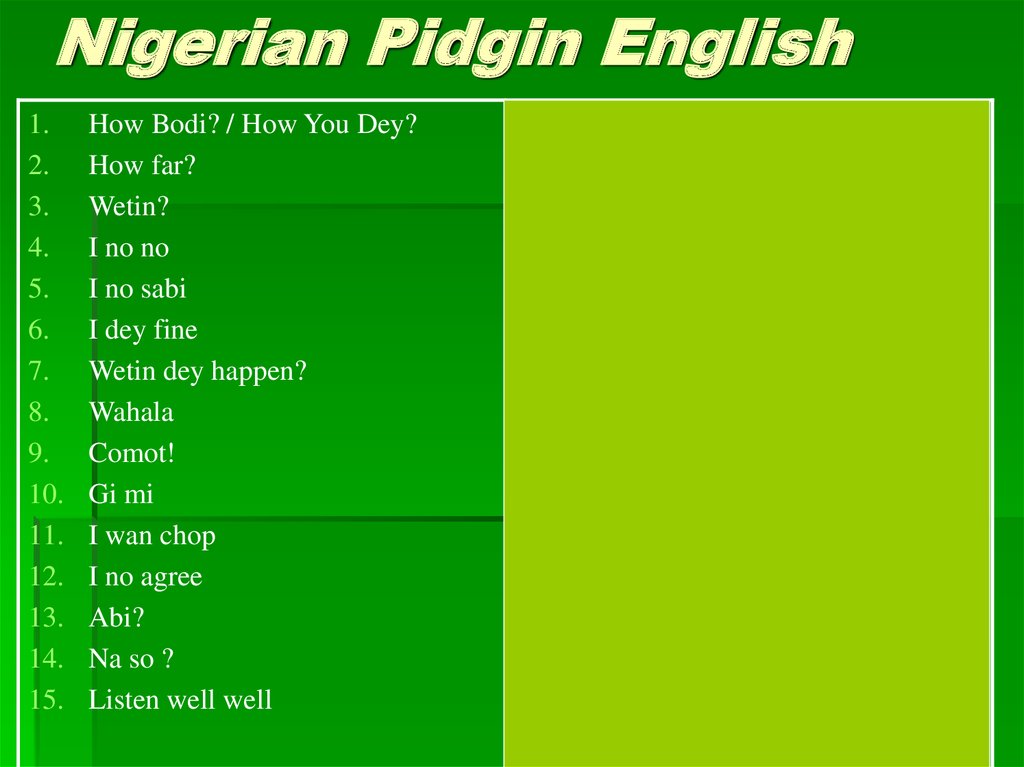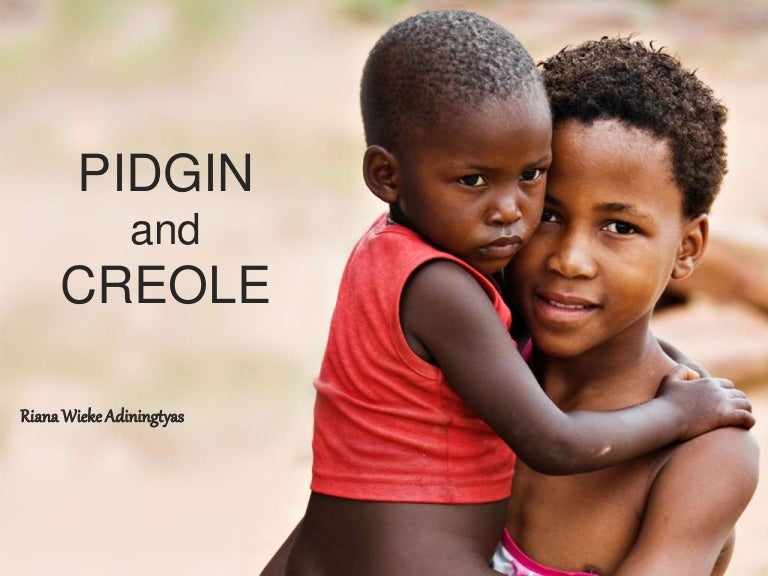

Word classes more flexible than in adult language (free conversion).High percentage of content words with a correspondingly low number of function words.

The Baby-Talk TheoryĪt the end of the last century Charles Leland, when discussing China coast pidgin English, noted that there were many similarities with the speech of children such as the following features: These can be presented as a basic group of five theories which show a degree of overlap note that a mixture of origins is also a possibility which should also be considered. 17) mention there are various theories about the origin of pidgins which have been proposed in the last hundred years or so. Most linguists do not consider a pidgin to be a full-fledged language, but something that is used together due to circumstances and omitted when it is no longer needed. The speakers create a mutual language using words from the speakers’ mother tongues and an extremely flexible, simplified grammar. This situation is often found where multiple societies trade or where slave populations from multiple locations are brought into one area. It involves situations in which a population speaks several different languages and is required to communicate on a regular basis, but none of the languages of the population has primacy over the others. A pidgin is a restricted language which is used to communicate between two social groups of which one is in a more dominant position than the other.

However, adults who learn pidgin usually speak it for the rest of their lives, and consequently, they do not develop grammar. 63) points out that ‘pidginization is really a complex combination of different processes of change, including reduction and simplification of input materials, internal innovation, and regularization of structure, with L1 influence also playing a role.’ Pidgin is words thrown out, there is no structure, and usually it is not long lasting.

When dealing with the other groups, the superstrate speakers adopt many of these changes to make themselves more readily understood and no longer try to speak as they do within their own group. Trask and Peter Stockwell, “is nobody’s mother tongue, and it is not a real language at all: it has no elaborate grammar, it is very limited in what it can convey, and different people speak it differently.Generally those with less power (speakers of substrate languages) are more accommodating and use words from the language of those with more power (the superstrate), although the meaning, kind and use of these words may be influenced by the substrate languages. By the time a pidgin becomes a creole, the language has developed enough of its own characteristics to have a distinct grammar of its own.Ĭhinese Pidgin English (also called Chinese Coastal English or Pigeon English traditional Chinese: 洋涇浜英語 simplified Chinese: 洋泾浜英语 pinyin: Yángjìng bāng yīngyǔ) is a pidgin language lexically based on English, but influenced by a Chinese substratum. It’s a bare-bones language designed to enable minimum-viable communication. Pidgins often borrow words from their source languages and feature a simplified grammar.


 0 kommentar(er)
0 kommentar(er)
